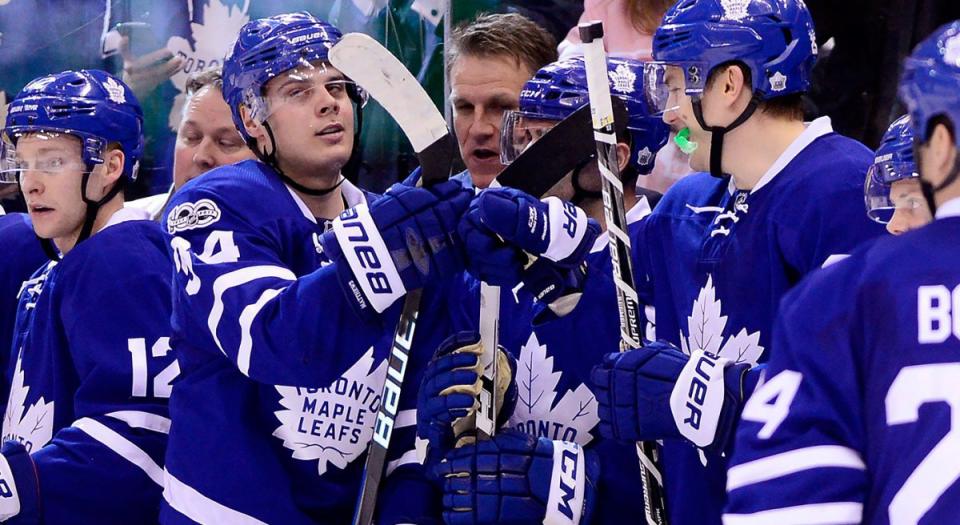How Canada's five NHL playoff teams bounced back from disappointing seasons
Last season, the once-a-year tradition in Canada of obsessing over the successes and failures of a hockey team was limited to neighbourhoods cheering on local heroes who were chasing the Stanley Cup as members of a franchise based south of the border.
But one year after the hockey-mad nation was without a single entry into the Stanley Cup Playoffs for the first time in nearly a half century, five of the seven Canadian NHL markets that simultaneously tuned out at this time last season will have the opportunity to fully engage once again.
This year, Montreal and Ottawa earned the top two seeds in the Atlantic Division, while Toronto advanced in the final wild-card slot in the Eastern Conference. Out west, provincial rivals Edmonton and Calgary qualified in the Pacific Division.
Here’s how Canada’s five postseason-bound teams managed to bounce back:
Montreal
With a 91-38-11 record and league-best .929 save percentage across the last three seasons, Carey Price’s return to full health after his lost campaign is the most sensible rationale behind Montreal’s turnaround. But as uncomplicated as it was, the measures Marc Bergevin took to restore order were hardly that.
When the either-or debate surrounding P.K. Subban and Michel Therrien turned out to be neither, it pointed to a franchise at a seemingly significant crossroads. But while the Subban decision will persist long after this playoff run, the defence-first style that Shea Weber maintains, and overall compatibility that Bergevin was hoping to achieve with the deal, has been most evident since parlaying it with a change behind the bench.
The Canadiens are 16-7-1 and have allowed the third fewest goals in the two months since Claude Julien took over for Michel Therrien. They might be the most complete Canadian contender.
Toronto

To reach the postseason, the Maple Leafs were historically reliant on rookies.
Only two teams in NHL history – the 1981-82 and 1992-93 Winnipeg Jets – boasted a freshman class that produced more points than the 304 Maple Leafs rookies amassed while re-writing the franchise record book.
However, the punch they provided is only part of a greater fix. Because Auston Matthews achieved an elite standard as a teenage rookie centre in the NHL so soon, and others like Mitch Marner, William Nylander and Connor Brown mixed well with the existing veterans on the roster, the Maple Leafs transformed into a legitimate three-line team, and, subsequently, a nightmare for defences to match up against.
This new reality helped Nazem Kadri hit 30 goals for the first time and James van Riemsdyk fashion a career-best offensive campaign as the Leafs outscored their defensive deficiencies to make the postseason in their salad days.
Ottawa
The Ottawa Senators, too, are having success in a new system – only the changes in Guy Boucher’s structure are a little more comprehensive.
Run-and-gun is now a lost art in Ottawa. This was a team previously content with trading chances at a frenzied pace with the most dynamic defencemen in the game, Erik Karlsson, leading its attack from the back end. Now Karlsson, suddenly perhaps the most complete player at his position, is working tirelessly to anchor a zip-tight system that’s slashing down events all over the ice.
One season after the amount of goals scored in their games exceeded every team in the Eastern Conference, Senators games averaged the fewest.
Edmonton

When the Oilers parted with a supremely talented forward to provide a boost to their defensive core, some argued that the Taylor Hall subtraction up front might cancel whatever improvements were made at the back end, simply on the basis of talent discrepancy.
Those folks probably didn’t have Connor McDavid pegged for 100 points.
Emerging as the game’s presumptive most valuable player in his second season, and working on a line with fellow star Leon Draisaitl and sudden 27-goal man Patrick Maroon, McDavid carried the Oilers through predicted spells, keeping them on the path to the postseason (along with honourable mention Cam Talbot) while they established an identity.
Though still top heavy, the attack has finally taken on another dimension with Ryan Nugent-Hopkins, Jordan Eberle and Milan Lucic finding a groove over the final few weeks of the season, an alchemy that contributed to their 12-2 finish.
Calgary
It took several months (and if you haven’t heard already, several beers on a train) for the Calgary Flames to properly configure the moving parts, but when they finally got it sorted, they attained some immense success under Glen Gulutzan.
Calgary went a whole month without losing in regulation during the second half of the season. This was in part due to some successful tinkering to its forward groupings (namely Michael Ferland helping extract great hockey from Johnny Gaudreau and Sean Monahan on the top line), but moreso a defence beginning to work in perfect sync, helping to promote goaltender Brian Elliott’s resurgence.
Elliott, who at one point lost his starter’s job and carried a sub-.900 save percentage through the All-Star break, won 17 of his last 23 starts with a .924 save rate.
More from Yahoo Sports:



